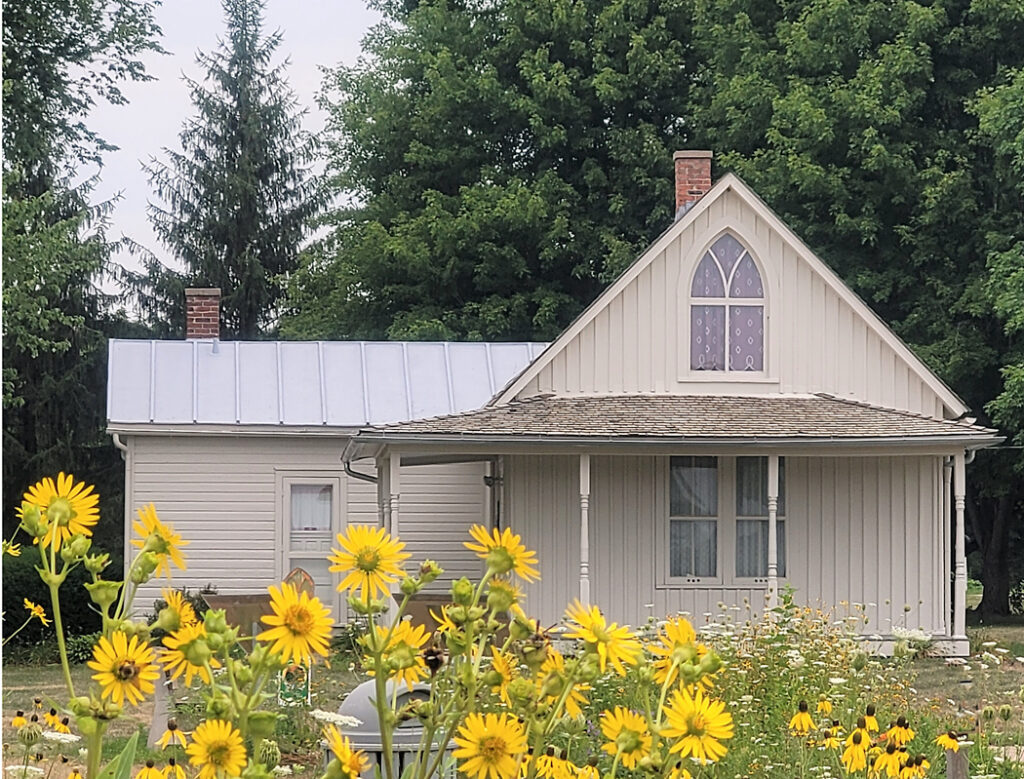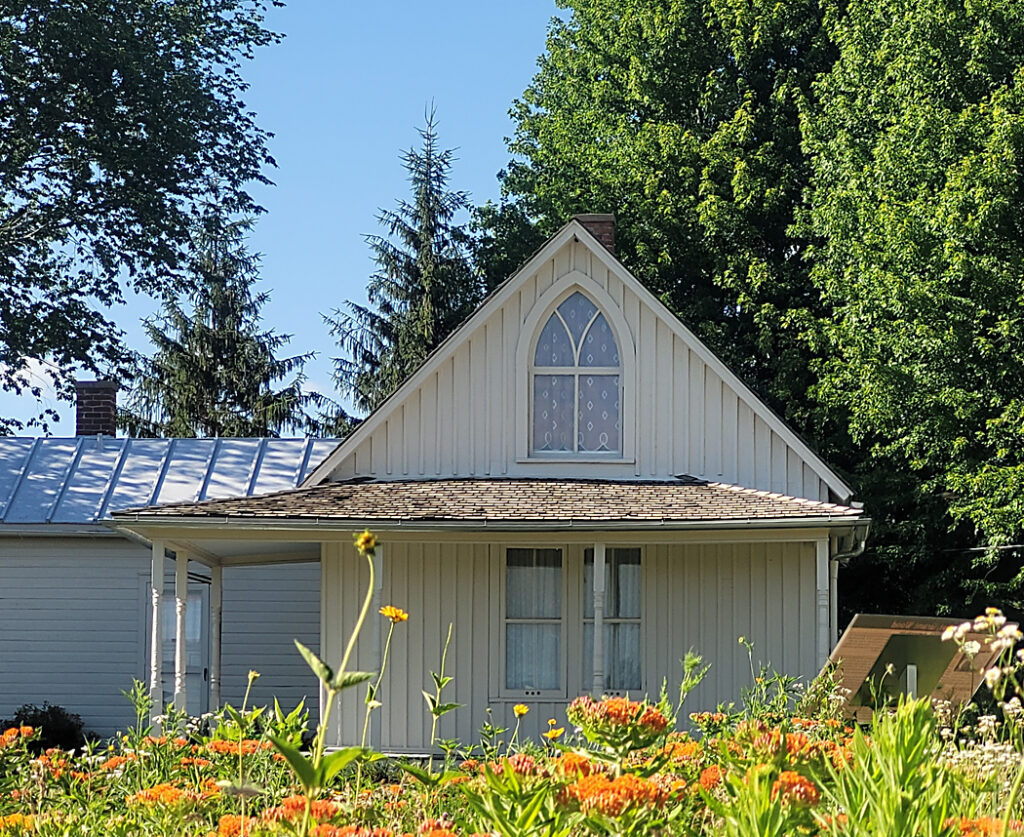
Nestled into the far corner of a modest neighborhood in a quiet town approaching the southeastern edges of rural Iowa lies a rather unassuming abode with an extraordinary story to tell. This 1,200-square-foot turn-of-the-century farmhouse has undoubtedly been viewed by millions around the globe, yet few would be able to precisely pinpoint it on a map. I was no exception.
I’m speaking, of course, of the American Gothic House from Grant Wood’s world-famous 1930 artwork, American Gothic. Remember that painting? Of course you do. It’s only one of the most iconic American paintings of the 20th century. It’s said to be the second most parodied painting in the world (beaten out by Da Vinci’s Mona Lisa).
But it wasn’t until I visited the Art Institute of Chicago to witness Wood’s iconic masterpiece in the flesh that I found myself thirsting for further insight. And as fate might have it, earlier this year I happened to relocate to the quaint Iowa town of Fairfield, a mere 15 miles from Eldon, home to the American Gothic House. And so I went.
But first, let’s clear the air on a handful of misconceptions about Wood’s painting and the curious homestead itself. For starters, there’s no shortage of conversation surrounding the painting’s two solemnly smug and perfectly characterized individuals who stand tall and thin and unimpressed, as if posing for a camera portrait.
Many are quick to describe the painting as a farmhand husband and homesteading wife who encapsulate the Great Depression era. However, the truth is that Wood had intended the duo to be father and daughter. And the people that Wood used as his models were actually his sister, Nan Wood Graham, and his dentist, Dr. Byron McKeeby.

Another rather popular string of misconceptions is centered around the house itself—beginning with the idea that the actual house no longer exists and the home is a replica. This simply isn’t true. The home that stands atop that grassy knoll is in fact the same one that caught Wood’s attention back in 1930.
A second myth is that the home was removed from its original location and relocated to a more scenic lot. Also untrue. The home has rested in the same place, relatively as is (aside from necessary repairs), since 1881. This misconception may have come from the fact that the original road leading up to the home was rerouted for more convenient access to the property.
And last, my favorite misconception and bit of fun trivia involving the home is what exactly makes it “gothic,” and why Wood chose to call it American Gothic. It’s actually a play on the home’s architectural style—Carpenter Gothic. The Gothic design of the upper-level window (mirrored on the other side of the home) is typically seen in pre-Renaissance cathedrals, playing into the idea that this abode had something of an antiquated aesthetic. The owner chose to grace it with these iconic church windows after seeing them advertised in a Sears catalog.
I must admit, upon first glance I found the home a bit underwhelming. Perhaps I was expecting a large and captivating farm home resting quietly in the middle of hundreds of acres of farmland. But when you see the home for what it is—it’s truly mesmerizing. Because, well, it’s poetically Americana. And as a writer and an admirer of the Midwestern and Southern cultures in which I was raised, I love nothing more than unexpectedly stumbling upon a beautifully perfect Americana gem such as the American Gothic House. It’s a must-see for anyone who might find themselves traveling through this part of the state.

And when you do visit, be sure to stop by the American Gothic House Center, which stands adjacent to the house. While there, ask for Cari. She’s a living encyclopedia of all things American Gothic and will be more than excited to answer any questions and inform you of the many events taking place at this captivating historical site.
The next event at the American Gothic House is Porchfest: Music on the Porch on Saturday, August 24, 2024. Bring your own chair and enjoy live music. For more information on the site and its many events, visit AmericanGothicHouse.org.
